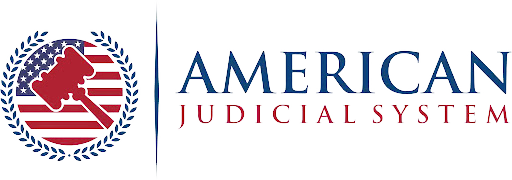When it comes to child safety, parents don’t take chances. After a collision, many wonder: Can you use a car seat after an accident? While the seat may appear intact, unseen structural damage could compromise its protective capabilities. This decision carries significant consequences — it can mean the difference between safeguarding a child or risking serious injury in another crash.
Car seats are essential safety devices designed to absorb crash forces and reduce the risk of injury. But what happens once they’ve done their job? Even minor accidents can affect their integrity. That’s why safety organizations, including the National Highway Traffic Safety Administration (NHTSA), provide specific guidelines for determining whether a car seat should be replaced.
This article explores the most common questions surrounding car seat reuse after a crash. We’ll break down federal recommendations, explain why replacement might be necessary, and clarify the risks of ignoring potential damage. You’ll also learn how to inspect a seat for signs of damage and how insurance can cover replacement costs.
If you’ve recently been in an accident — or just want to be prepared — keep reading to find out you can use a car seat after an accident. And what the safest course of action is for your family.
Can you use a car seat after an accident?
Not always. Even if a car seat looks OK after a crash, its structural integrity may be compromised. Safety experts and manufacturers often recommend replacing the seat, especially after moderate or severe accidents. Always follow NHTSA guidelines and check the car seat manual to determine whether it’s safe. When in doubt, replace it to ensure your child’s protection.
Why You Should Rethink Using a Car Seat After a Crash?
After an accident, many car seats show no external damage. However, their internal structure may have been compromised in ways you can’t see. Like a helmet that’s been hit, a car seat may no longer provide the same level of protection as before the crash. This is particularly concerning when considering the car seat’s sole purpose is safeguarding your child in another collision.
Some parents may be tempted to reuse the seat due to its cost or appearance, but safety experts agree it’s better to be safe than sorry. The National Highway Traffic Safety Administration (NHTSA) outlines specific criteria to determine whether a seat needs replacement. These include the severity of the crash, whether the vehicle could be driven away, and whether anyone was injured.
If the incident involved a car accident, even a minor one, it’s important to review both NHTSA guidelines and the manufacturer’s recommendations carefully. Car seat manufacturers often require replacement after any crash, regardless of severity. Ignoring these recommendations could void the warranty and, more importantly, put your child at serious risk.
Another reason to be cautious is that crash energy can cause microfractures in the plastic or internal harness system that aren’t visible. These weaknesses might only become apparent in a future accident — when it’s too late.
When Should a Car Seat Be Replaced After an Accident?
NHTSA Replacement Guidelines for Post-Crash Car Seats
The National Highway Traffic Safety Administration (NHTSA) offers strict guidance on when to replace a car seat following an accident. The car seat should be replaced regardless of visible damage if the crash is classified as moderate or severe. This is due to the potential for internal compromise that may not be noticeable to the naked eye.
Criteria for Minor Crash Classification
NHTSA outlines specific conditions that must all be met for a crash to be considered minor. These include the ability to drive the vehicle away from the scene, no airbag deployment, no injuries sustained by anyone in the vehicle, no damage to the door closest to the car seat, and no visible damage to the seat itself. If even one of these conditions is not met, the incident cannot be classified as minor, and the seat should be replaced.
Manufacturer Policies Override General Guidelines
While NHTSA provides general recommendations, many car seat manufacturers have their policies. Some brands require immediate replacement after any crash, regardless of severity. These guidelines are typically listed in the product manual or available through customer service.
Insurance Coverage for Replacement
Insurance providers frequently include car seat replacement in crash-related claims. Including the seat in your insurance report and submitting purchase receipts or images often helps secure reimbursement.
Appearance-Based Judgments Are Risky
A car seat can look completely undamaged while having hidden internal fractures or weakened safety mechanisms. For this reason, physical inspection alone is insufficient to ensure the seat remains safe for future use.
Is Your Car Seat Still Safe? Post-Accident Inspection Tips
After an accident, even one that seems minor, it’s essential to thoroughly assess your child’s car seat before reusing it. A seat may look perfectly fine on the outside but could have internal damage that affects its ability to protect your child in future crashes. These safety compromises are not always visible, so attention to detail is important. Below are some clear indicators that a car seat may be unsafe for continued use:
- Cracked or Compromised Shell
Even small cracks or fractures in the plastic shell can critically weaken the car seat’s structure. Once the frame’s integrity is compromised, its ability to effectively absorb impact forces is significantly reduced — making it unsafe for continued use. - Damaged Harness Straps
Frayed, stretched, or torn harness straps can no longer provide the secure restraint your child needs in a crash. These straps are engineered to distribute force evenly and hold your child firmly in place — any visible wear or damage should be considered a serious safety risk. - Malfunctioning Buckles, Clips, or LATCH Systems
The buckles, harness clips, and LATCH connectors are vital components that keep the seat and your child secure during transit. If parts are broken, loose, or unresponsive, the car seat may fail to perform as designed in a collision. - Missing or Loose Internal Components
Internal parts — such as bolts, pads, or structural inserts — may become dislodged or misaligned during impact. If the seat rattles when moved or shows visible gaps or looseness, this may indicate internal damage, and the seat should not be reused. - Unstable Installation
A car seat must be installed tightly, whether secured by a seatbelt or LATCH. If, after a crash, the seat no longer holds firmly in place or moves excessively, this is a strong indicator that the seat has lost its structural reliability and should be replaced. - Unusual Noises or Internal Rattling
Any unexpected sounds — such as popping, clicking, or rattling — could signal hidden internal damage. These noises often suggest broken or loosened components inside the seat shell and must be taken seriously, even if no external damage is visible.
The Science Behind Car Seat Safety and Crash Forces
Car seats are engineered to absorb crash energy and shield a child from harm. During an accident, the seat may experience sudden deceleration forces that cause internal damage. These forces are particularly harsh on the shell, harness system, and EPS foam padding designed to protect the child’s head and spine.
Even in a crash where the seat appears untouched, force distribution may cause minor fractures or weakening of critical components. Since these safety mechanisms are designed for one-time use, reusing a seat that’s been through an impact can drastically reduce its performance in a second collision.
Additionally, components like buckles and adjusters may stretch or misalign under pressure. Over time, these failures can accumulate and pose serious dangers. Manufacturers test their seats for durability in new conditions — not after they’ve experienced crash energy.
Understanding this engineering perspective helps clarify why experts emphasize caution when deciding: Can you use a car seat after an accident? Safety isn’t just about what you can see — it’s about unseen compromises that could matter most.
Top Reasons Parents Reuse Damaged Car Seats (And Why They Shouldn’t)
It Looks Fine: One of the most common reasons parents continue using a car seat after a crash is because it appears undamaged. However, many structural issues caused by crash forces are internal and invisible to the naked eye. Cracks in the plastic shell or weakened harness systems can remain hidden while compromising the seat’s ability to protect your child in a second collision.
It’s Expensive to Replace: Car seats, especially high-end models, can be costly, leading many parents to avoid replacing them. However, most auto insurance policies will cover the cost of a new car seat if it is involved in an accident. Including it in your insurance claim can make replacement more affordable than expected.
They Didn’t Know the Guidelines: Lack of awareness plays a significant role in the continued use of damaged car seats. Many parents aren’t familiar with NHTSA recommendations or their car seat manufacturer’s policies, which often require replacement after an accident. Knowing these guidelines is crucial to making informed decisions.
The Crash Was Minor: Some parents assume the seat must still be safe if the accident was minor. While it’s true that minor crashes may not require replacement, specific conditions must be met. If one of those conditions is not fulfilled, the car seat should be replaced.
There Were No Injuries: Just because no one was hurt doesn’t mean the seat wasn’t compromised. Car seats absorb crash energy to prevent injury — and in doing so, may sustain damage themselves.
It’s a Trusted Brand: Even the most reputable car seat brands are not immune to crash forces. Trust in a brand should never replace post-accident inspection and safety evaluations.
In Closing
Whether or not the seat appears damaged, internal issues may still exist that put your child at risk. Safety experts, manufacturers, and federal agencies agree: when in doubt, replace the seat.
Although the cost and inconvenience may seem frustrating, your child’s safety is priceless. Always check the NHTSA’s criteria, consult the seat’s manufacturer, and consider speaking with a certified technician. Prioritize peace of mind over convenience — it could save a life.
FAQ’s
Q. Can I reuse a car seat after a minor accident?
A. Possibly, but only if all NHTSA minor crash conditions are strictly met. Always refer to your car seat’s manual for brand-specific instructions before reuse.
Q. Will insurance cover the cost of a new car seat?
A. Yes, most insurance policies offer coverage for car seat replacement after an accident. Include the seat in your claim and provide receipts if available.
Q. What if my car seat looks undamaged?
A. A visual check alone isn’t reliable. Internal damage might still exist and compromise safety. It’s best to consult the manufacturer before continuing use.
Q. How do I dispose of a damaged car seat?
A. Cut the harness straps, label the seat unsafe, and dispose of it in the trash. You can also contact local recycling or safety programs for proper disposal methods.
Q. Where can I get help checking my car seat after an accident?
A. You can contact a certified Child Passenger Safety Technician through Safe Kids Worldwide or inquire at your local fire or police department for a professional inspection.










